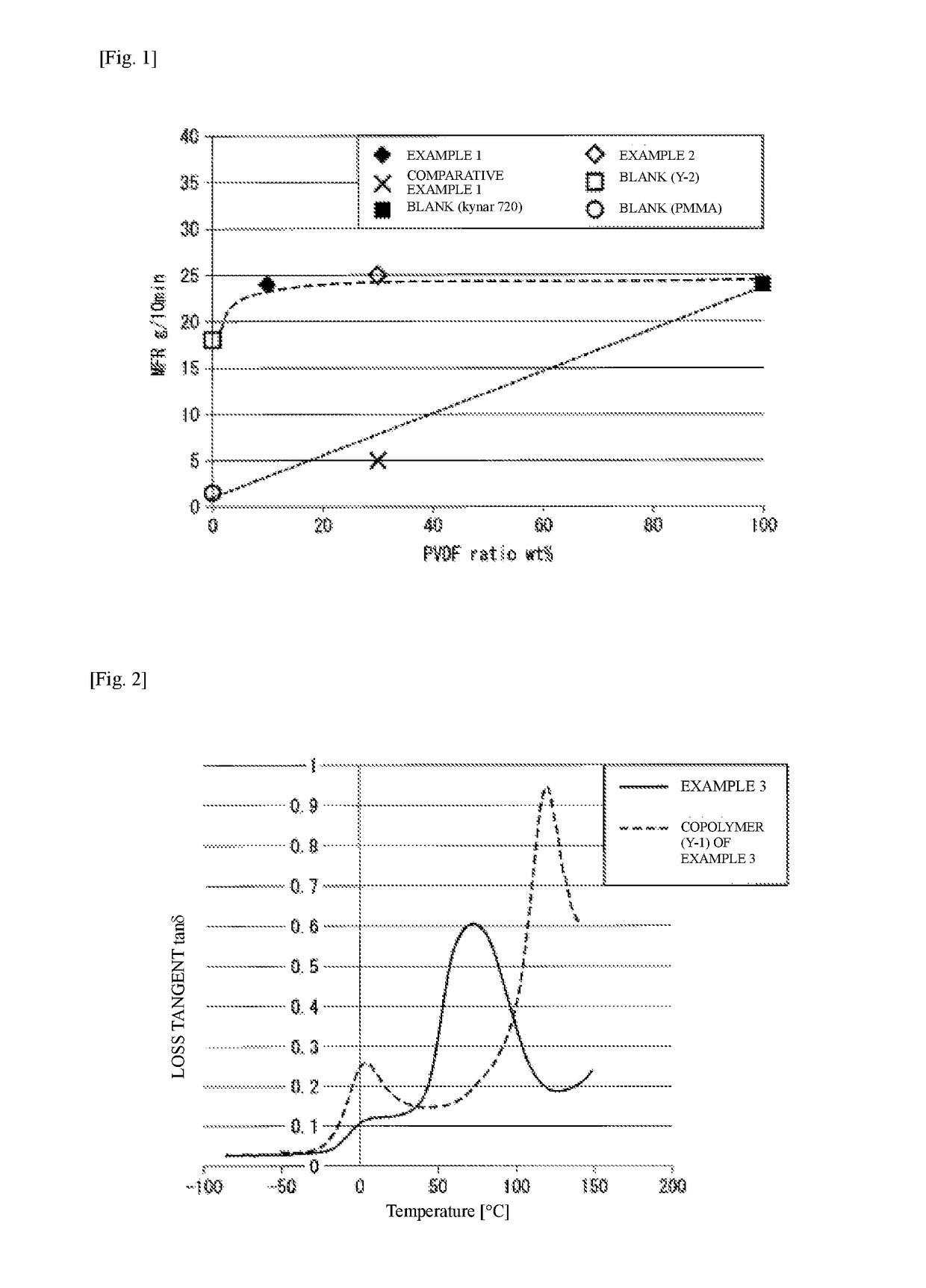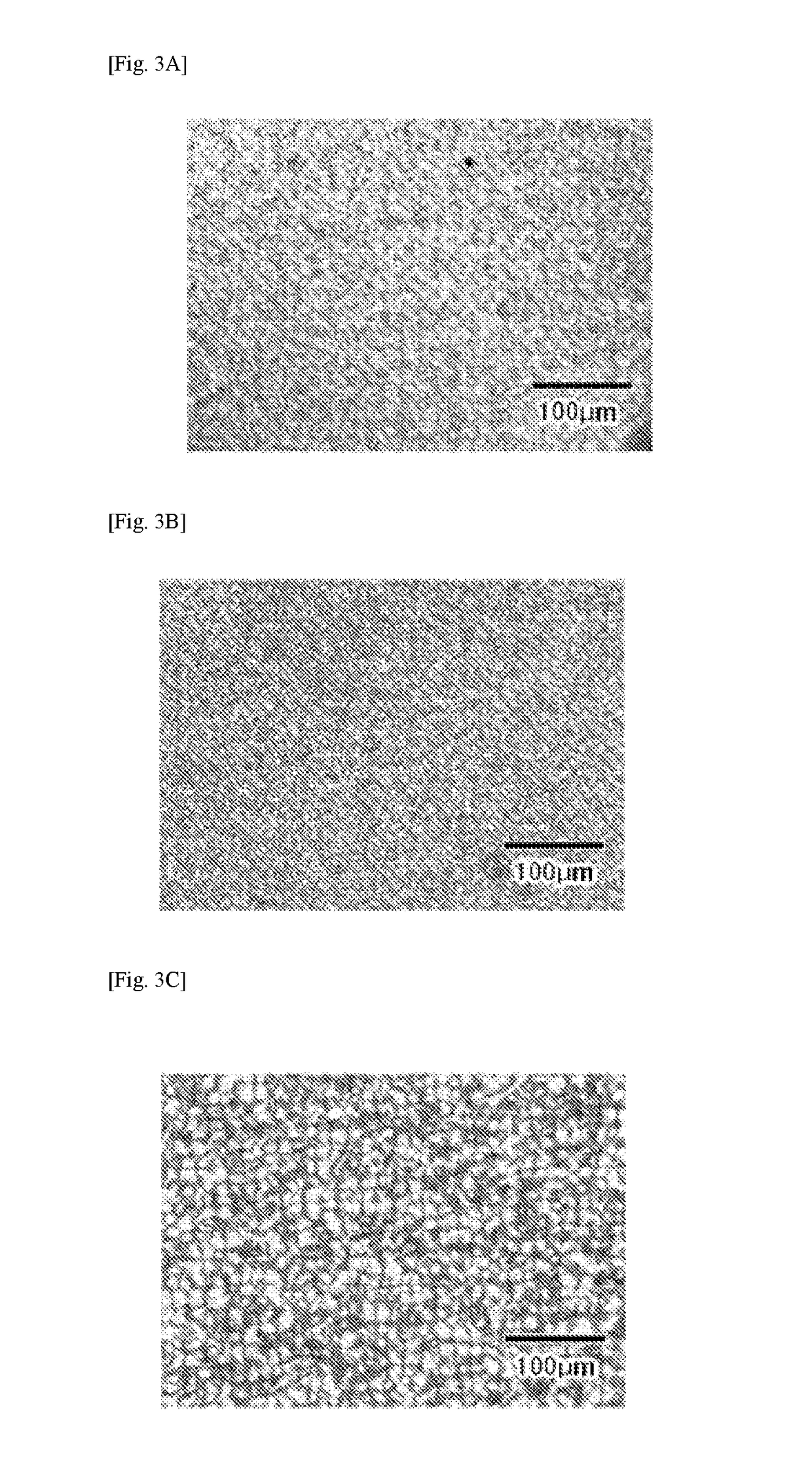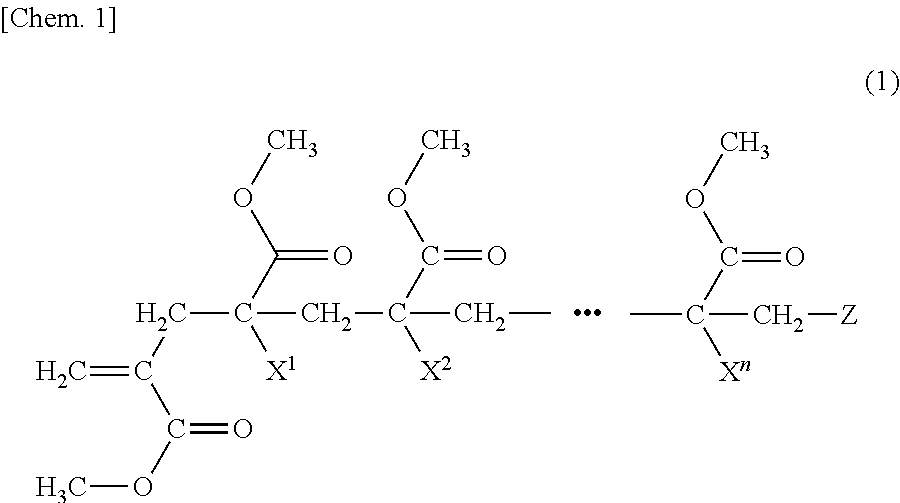Resin composition and molded body formed from resin composition
a technology which is applied in the field of resin composition and molded body formed from resin composition, can solve the problems of difficult application of pvdf to transparent materials, low transparency, poor heat resistance of acrylic resin, etc., and achieves excellent dynamic properties, high transparency, and convenient control of physical properties of resin compositions.
- Summary
- Abstract
- Description
- Claims
- Application Information
AI Technical Summary
Benefits of technology
Problems solved by technology
Method used
Image
Examples
first embodiment
[0131]The resin composition of the first embodiment of the present invention contains, in 100% by mass of the resin composition, 5% by mass or more and 65% by mass or less of the polymer X and 35% by mass or more and 95% by mass or less of the polymer Y.
[0132]When the content ratio of the polymer X is 5% by mass or more, the effect of improving the polymer Y like fluidity is exhibited. The fluidity is quantified as a melt mass flow rate which is defined by JIS K 7210, for example. In the present specification, if there is a change of 4 g / 10 minutes or more when the measurement is carried out at the same conditions, for example, temperature of 220° C. and a load of 5 kg, it is determined to have a sufficient improving effect. According to the resin composition of the first embodiment of the present invention, the melt mass flow rate easily has a discrepancy of 4 g / 10 minutes or more compared to melt mass flow rate of a resin composition which consists of 100% by mass of the polymer Y...
second embodiment
[0153]The resin composition of the second embodiment of the present invention contains, in 100% by mass of the resin composition, more than 65% by mass but 85% by mass or less of the polymer X and 15% by mass or more but less than 35% by mass of the polymer Y, in which the domain (y1) or the domain (y2) comprises a macromonomer unit. As described above, it is preferable that the domain (y1) comprises a macromonomer unit, and it is more preferable that the macromonomer unit comprises a methyl methacrylate unit.
[0154]When the content ratio of the polymer X is more than 65% by mass, the crystallization progresses rapidly. Furthermore, when the content ratio of the polymer X is 85% by mass or less, the resin composition has higher impact resistance compared to a case in which the polymer X is blended with a homopolymer instead of the polymer Y.
[0155]When the content ratio of the polymer Y is 15% by mass or more, the resin composition has higher impact resistance compared to a case in wh...
preparation example 1
Preparation of Dispersant
[0197]To a reaction vessel with volume of 1200 L which is equipped with a stirrer, a condenser, and a thermometer, 61.6 parts of 17% aqueous solution of potassium hydroxide, 19.1 parts of methyl methacrylate (manufactured by Mitsubishi Rayon Co., Ltd.), and 19.3 parts of deionized water were added. Subsequently, the liquid inside the reaction apparatus was stirred at room temperature, and after confirming the exothermic peak, it was additionally stirred for 4 hours. After that, the reaction solution inside the reaction apparatus was cooled to obtain an aqueous solution of potassium methacrylate.
[0198]Subsequently, to a reaction vessel with volume of 1050 L which is equipped with a stirrer, a condenser, and a thermometer, 900 parts of deionized water, 60 parts of sodium 2-(methacryloyloxy)ethane sulfonate (manufactured by Mitsubishi Rayon Co., Ltd., trade name: Acryester SEM-Na), 10 parts of the above aqueous solution of potassium methacrylate, and 12 parts o...
PUM
| Property | Measurement | Unit |
|---|---|---|
| temperature | aaaaa | aaaaa |
| temperature | aaaaa | aaaaa |
| crystal fusion enthalpy | aaaaa | aaaaa |
Abstract
Description
Claims
Application Information
 Login to View More
Login to View More - R&D
- Intellectual Property
- Life Sciences
- Materials
- Tech Scout
- Unparalleled Data Quality
- Higher Quality Content
- 60% Fewer Hallucinations
Browse by: Latest US Patents, China's latest patents, Technical Efficacy Thesaurus, Application Domain, Technology Topic, Popular Technical Reports.
© 2025 PatSnap. All rights reserved.Legal|Privacy policy|Modern Slavery Act Transparency Statement|Sitemap|About US| Contact US: help@patsnap.com



